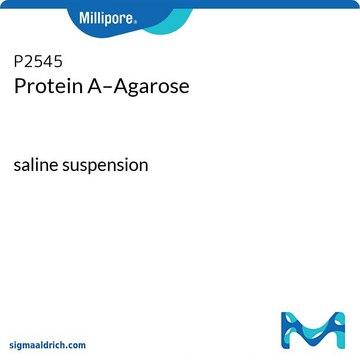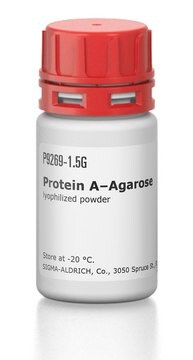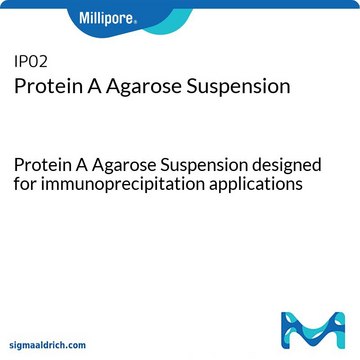Wichtige Dokumente
P1406
Protein A–Agarose
lyophilized powder
Synonym(e):
Protein A resin
About This Item
Empfohlene Produkte
Form
lyophilized powder
Qualitätsniveau
Kennzeichnungsgrad
~2 mg per mL
Matrix
Cross-linked 4% beaded agarose
Matrixaktivierung
cyanogen bromide
Matrixanbindung
amino
Matrix-Spacer
1 atom
Kapazität
≥15 mg/mL binding capacity (human IgG)
Lagertemp.
−20°C
Suchen Sie nach ähnlichen Produkten? Aufrufen Leitfaden zum Produktvergleich
Anwendung
Menge
Physikalische Form
Signalwort
Danger
H-Sätze
Gefahreneinstufungen
Eye Dam. 1 - Skin Corr. 1B - STOT SE 3
Zielorgane
Respiratory system
Lagerklassenschlüssel
8A - Combustible corrosive hazardous materials
WGK
WGK 3
Flammpunkt (°F)
Not applicable
Flammpunkt (°C)
Not applicable
Persönliche Schutzausrüstung
Eyeshields, Gloves, type N95 (US)
Hier finden Sie alle aktuellen Versionen:
Besitzen Sie dieses Produkt bereits?
In der Dokumentenbibliothek finden Sie die Dokumentation zu den Produkten, die Sie kürzlich erworben haben.
Kunden haben sich ebenfalls angesehen
Unser Team von Wissenschaftlern verfügt über Erfahrung in allen Forschungsbereichen einschließlich Life Science, Materialwissenschaften, chemischer Synthese, Chromatographie, Analytik und vielen mehr..
Setzen Sie sich mit dem technischen Dienst in Verbindung.














